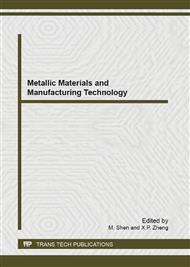p.190
p.194
p.200
p.204
p.208
p.212
p.216
p.220
p.225
Analysis of Temperature and Residual Stress Distribution in Laser Welding for Ta/Mo Lap Joints Using FEM
Abstract:
A nonlinear transient three-dimensional finite element model for the laser welding process is developed to investigate the temperature and residual stress distribution. All the major physical phenomena associated to the laser welding process, including temperature dependent thermo-physical and mechanical properties are taken into account in the model. The heat input to the model is assumed to be a Gaussian heat source. Results show that the temperature distribution of laser welding is consistent with the actual, and along-welding line longitudinal stress and transverse stress are retained in the weld zone after laser welding and cooling to the room temperature.
Info:
Periodical:
Pages:
220-224
Citation:
Online since:
September 2013
Authors:
Price:
Сopyright:
© 2013 Trans Tech Publications Ltd. All Rights Reserved
Share:
Citation:


